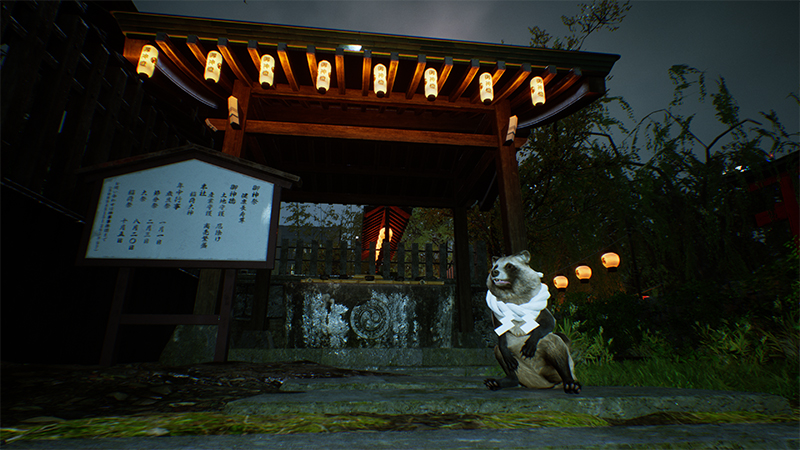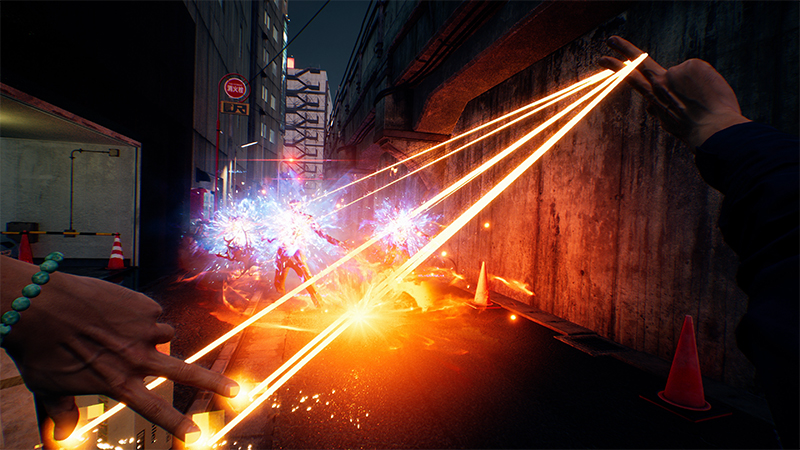Bethesda Softworks publishes a ton of shooters. From the adrenaline-soaked Doom to the narrative-heavy Wolfenstein to the RPG side of the genre with Fallout, the publisher has a wide breadth of first-person shooter experiences. Ghostwire: Tokyo is yet another first-person shooter in its wheelhouse and it’s the most unique of the bunch, as it substitutes big, beefy shotguns for elaborate magical spells. And while it lacks some of the tightness seen in those other games, it still seems like it is worthy of being in Bethesda’s wheelhouse.
Ghostwire is not much of a horror game, which the team has said before, but that realization is still hard to grasp since Tango Gameworks is known for the Evil Within games. The Evil Within 2 did move more away from outright horror and Ghostwire: Tokyo is yet another step from that. It’s full of ghosts, yokai, and other haunted things, but it’s not trying to elicit fear as much as it is trying to set a specific mood.
RELATED: Ghostwire: Tokyo Gets Free Playable Visual Novel
It’s a unique and effective mood, as these creatures and spirits stalk the barren streets of Tokyo and add to its foreboding nature. Since almost everyone has vanished, it’s already slightly on the unnerving side, so it naturally fits with the beasts running amok. These malevolent and benevolent creatures are creatively designed, too, drawing from Japanese culture and mixing in enough originality to result in something it can call its own. The Slendermen and cute cat yokai are appealing, but in different ways and speaks to the game’s strong overall style. It’s even got some surprisingly funny writing (protagonist Akito and KK, the wraith inside him, have some surprisingly snappy banter, at times) that help change up the tone and keep it from getting monotonous.

Tokyo might not be the most visually staggering locale with a level of technical prowess to stand up there with the best, but its lighting and aforementioned atmosphere pick up the slack. Streets are lit through neon signs, which reflect nicely on the wet streets, but the way in which they sit beside abandoned businesses and cars is quite fitting. With the amount of crashed vehicles and abandoned grocery bags and umbrellas littered around, it truly does look like everyone disappeared quickly. Combined with the Japanese aesthetic that a Japanese developer like Tango would know best, and Ghostwire’s vision of Tokyo is an interesting place unlike many other games, even ones set in the same country.
This world is also set up differently, as well. Similar to how it stepped past The Evil Within 2 in regards to reeling in its horror, Ghostwire goes one step further than that sequel by opening up its world a bit more. It’s a web of urban streets and rooftops blocked off by mysterious fog and filled with its share of monsters, side missions, and collectibles. Most of these are marked with icons, so it’s not completely powered by player-driven exploration, but it is still engaging to wander around and absorb its sights and see what mysteries lie around each corner. It’s one-of-a-kind style seemingly elevates it above some repetitive open-world games since it doesn’t feel derivative or like it is slavishly following an established template.

Its shooting also doesn’t follow any templates. While it can be likened to games like Doom or Hexen, it’s still its own thing. Elemental spells take the place of traditional firearms, but function in a similar way. The wind shot is like a standard attack, the water one is a wider blast, and the fiery spell is more like a rocket launcher. There are also charged attacks, various items, and a silent bow that give combat even more options. They can all be upgraded, too, garnering more functionality and depth while also theoretically giving players more ways to progress.
RELATED: Ghostwire: Tokyo Showcase Breaks Down Its Magical Shooting Gameplay
While it might require some fine-tuning in the settings (the default sensitivity is incredibly weighty and sluggish), combat is generally exciting as players have to repel the hordes and watch out for melee swipes and ranged attacks. Perfectly blocking a projectile and then charging a rocket shot and extracting some enemy cores is an engaging loop, which is partially thanks to the intricate and appropriately exaggerated hand animations. There’s a flow here that has hints of Doom with its Glory Kill equivalent and light enemy management, but done through enough of its own lens to not feel like a rip-off.
But it does diverge in some ways that could potentially deflate some of the combat down the line. Even on its highest setting, it is all rather easy. Simply walking backwards and firing will take care of almost any group. This means enemies can rarely ever catch up to the player and can make firefights a little less tense than they should be. Faster foes coupled with an evasive dodge move could possibly remedy this since it would mean moving at the same speed in one direction wouldn’t always be the winning plan. Perhaps there are hectic groups and tougher demons later in the game that require more precision and can counter the fruitful strategy of walking backwards, but the encounters in the first few chapters don’t provide as much pressure as they could.
These possible shortcomings don’t seem like they’ll sink Ghostwire: Tokyo. Its mechanics are still satisfying enough and its world and style remain the main appeal of the game. There’s just not much else like it and while uniqueness doesn’t always translate into quality, that just might be the case here.











